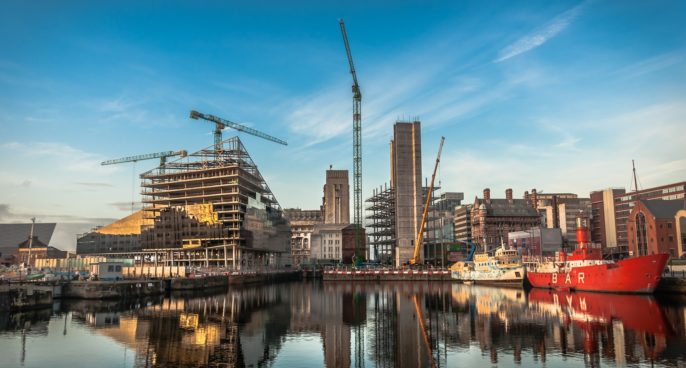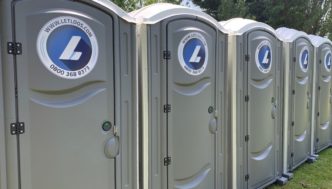
When it comes to establishing a construction site in Liverpool that abides by the legal rules and requirements, you need to be following the guidelines detailed and laid out by The Construction (Design & Management) Regulations 2015 (CDM 2015). Replacing the previous 2007 version of regulations, this new iteration outlines the legal requirements that employers have towards their workers on any place of work, including construction sites.
In order to understand the rules that you need to comply with on any Liverpool construction site, it’s essential to be familiar with the regulations of CDM 2015. This article will provide greater detail on what those are, but if you’re in any doubt, it’s advisable to consult the government legislation in its entirety.
Table of Contents
What is the CDM 2015?
As the acronym for The Construction (Design & Management) Regulations 2015, the CDM 2015 are vital guidelines provided by the HSE (the government’s Health and Safety Executive). It outlines all precautions that site managers need to follow in order to provide services and facilities that are legally compliant with worker health and safety requirements on construction sites (as well as other construction projects and locales).
The most important part of CDM 2015 regulations for a Liverpool construction site is ‘Schedule 2’, which describes the minimum welfare facilities required for a construction site in the UK. Being familiar with the rules and regulations outlined in Schedule 2 of the CDM 2015 will enable you to ensure that your construction site is legally compliant, and will help you narrow down site-specific characteristics, like how to find sufficient builders’ site toilets, as well as deciding on how many portable toilets you may need and any expected cost.
Rules and requirements for Liverpool construction sites
When it comes to the provision of welfare facilities on construction sites, Schedule 2 breaks down minimum requirements according to five categories: sanitary conveniences, washing facilities, drinking water, changing rooms and lockers, and facilities for rest. As such, we’ve broken down the rules and requirements that you’ll need to adhere to on your construction site according to these categories.
Sanitary conveniences
When it comes to following construction site rules and regulations, this is a big hitter. All construction sites need to have access to some kind of sanitary convenience. For short-term projects, it may be advantageous to make use of an adjoining building with the relevant facilities, but this can only be done with the express permission of the property owner or other relevant party.
The above approach is only suitable for shorter-term projects. If your project is likely to last for longer than 30 days (or a month), then construction site portable toilets and washing facilities are required, unless there is a suitable alternative in a nearby location that is readily and regularly accessible.
Schedule 2 of the CDM 2015 specifies that ‘suitable and sufficient sanitary conveniences’ are required on all construction sites. All conveniences – whether permanent or temporary – must be kept clean, well ventilated, and well lit. There should be separate provisions for both men and women, but unisex toilets are acceptable provided that each convenience is located in a separate room, with a door that can be locked from the inside, so as to ensure the safety and comfort of all workers.
You need to ascertain whether or not your construction site has access to mains water supply. Where possible, you should provide access to a flushing construction site toilet, which would ideally be mains-connected. However, if this connection is not possible, you can also opt for flushable portable toilets with a built-in water supply and drainage tanks. If neither of these options are suitable, then chemical portable toilets are appropriate.
So, how many toilets are you required to provide on-site? For portable toilets, you’ll need to provide 1 for every 7 people working a 40 hour week. If you are able to provide flush toilets, then you’ll need to follow the HSC guidelines for workplace toilets.
Showers and washbasins
There needs to be ‘suitable and sufficient’ washing facilities in the immediate vicinity of every sanitary convenience, as well as any changing room (more on those later). These washbasins should not be the same as any used for eating and drinking. It is also vital that any washbasin used by workers removing potentially hazardous substances – including construction dust, cement, solvents, or leads – should be separate to those used in either sanitation or welfare areas. This is critical to prevent cross-contamination.
All washbasins must have a supply of running hot and cold (or warm) water, along with soap or other means of cleaning, and towels or another means of drying. As with the toilets, these facilities need to be well ventilated and lit.
In the instance of dirty work where the face, hands, and forearms are expected to become heavily soiled – all of which is likely on a construction site – site managers must also provide a greater number of washbasins. These washbasins must provide enough space for thorough washing of the hands, face and forearms, meaning that small basins with no running water are not deemed suitable. For work where workers are likely to become extremely dirty, extra washbasins are necessary. There should be an extra basin provided for every 10 employees to a total of 50. An extra washbasin is then expected for every further 20 workers above 50.
If either ‘the nature of the work or for health reasons’ demands it, then showers should also be provided onsite, or at least be ‘made available at readily accessible places.’ Given the likelihood that construction workers will be getting dirty and sweaty on sites, and their increases risk of exposure to hazardous substances, the provision of showers as welfare facilities on construction sites is expected.
Showers, like washbasins, must have hot and cold (or warm) running water. They need to be clean, well ventilated, and lit. Soap – or other means of cleaning – must be provided, as must towels or other means of drying. Separate showers should be provided for men and women, except where separate cubicles with lockable doors are provided, and if each cubicle or room is designed to be used by one person at a time.
Drinking water
Site managers are obliged to provide construction site workers with access to clean drinking water according to the rules and regulations of CDM 2015. These should ideally be connected to a mains supply, so that there’s no risk of water shortages or contamination. However, in instances where this is not possible, it’s sufficient to supply an independent source of potable water. The requisite steps must be taken to ensure that this supply is not at risk of either stagnation or contamination.
There must be obvious signage designating drinkable water as drinkable – and specifying where water is not. Drinking vessels should also be provided in order to ensure that employees can access this water, unless the water is provided in a jet form from which people can easily drink.
Changing rooms and lockers
Under point 4 of Schedule 2, all construction site workers must have access to a readily accessible changing room if they have to ‘wear special clothing for the purposes of construction work’ and cannot be ‘expected to change elsewhere’ for reasons of either health or propriety.
If your construction site falls within this remit – for example, if your workers are likely to be exposed to hazardous substances – then it is a requirement to provide changing spaces. Separate rooms should be provided for men and women, and they must have seating and include facilities where an individual can dry any special or personal clothing.
Facilities like lockers should also be provided so that individuals can store their personal clothing and effects whilst at work, and in order to store any special clothing required for work overnight.
Facilities for rest
Construction jobs demand a lot of their workers, and, as such, ‘suitable and sufficient rest rooms’ must be provided or made accessible in areas proximate to a construction site.
This is an area where construction workers can take their breaks – and can make the most of the opportunity to stay out of the variable British weather. Allowing workers space to relax and recharge is vital to ensuring employee morale and efficient working conditions, as well as being a legal requirement on construction sites, where labour is often intense.
Relaxation facilities or rest areas need to have seating with backs and tables. These need to be provided in numbers that can accommodate the number of workers likely to use them at any one time. There should be facilities for employees to be able to prepare and eat their meals, including the means for boiling water – this may be a kettle or a catering urn. All rest areas also have to be ‘an appropriate temperature.’
Rest areas also need to be made available for both smokers and non-smokers, and steps should be taken to ensure that non-smokers are not disadvantaged by smokers. CMD 2015 also specifies that arrangements should be made for young mothers or pregnant persons to lie down and take adequate rest as and when required.
Remember that when it comes to welfare facilities like rest areas or changing rooms, there should be washbasins provided, and these need to be separate from those used for sanitary purposes. Washbasins where hazardous substances are likely to be rinsed off should also not be the same as those used for eating, drinking, or food preparation.
How to find welfare facilities for a Liverpool construction site
Finding sanitary and welfare facilities that keep you legally compliant for a Liverpool construction site is something that LetLoos can help with.
Toilets
When it comes to portable toilets for construction sites, we have chemical toilets, hot wash site toilets, and mains connected toilets. We even have a professional toilet cleaning service to ensure that your facilities remain well stocked and to a high standard.
Washing facilities
All of our toilets come with washbasins that provide adequate space for cleaning forearms and hands, as well as faces.
However, if your workers are likely to be exposed to hazardous substances, you may need to have mobile shower units onsite. Ours come with a water heater to regulate each individual shower temperature as well as anti-slip flooring. We also have static units available if that’s your preference.
Drinking water
Whether you need a water tank hire for use in a welfare unit, or require a fresh water replenish unit, we can help. Our water tanks have a 1000L capacity, which saves time and replacements, and are translucent, meaning that it’s easy to see when the water is running out.
Our fresh water replenishment is locked and tagged for maximum security and is fully compliant with all UK water regulations to boot, providing an ideal source of potable water for your workers when you don’t have access to mains-connected supply.
Welfare units
Our welfare units are robust, self-contained and fully compliant with all HSE workplace regulations. Hosting up to six team members, each unit comes steam cleaner and stocked with essentials like a microwave and kettle. We can also visit your site weekly to ensure that units remain clean and well stocked.
Contact LetLoos today to discover how we can help you set up a Liverpool construction site that’s compliant with all CMD 2015 rules and regulations – we’ll even provide you with a no-obligation quote.



